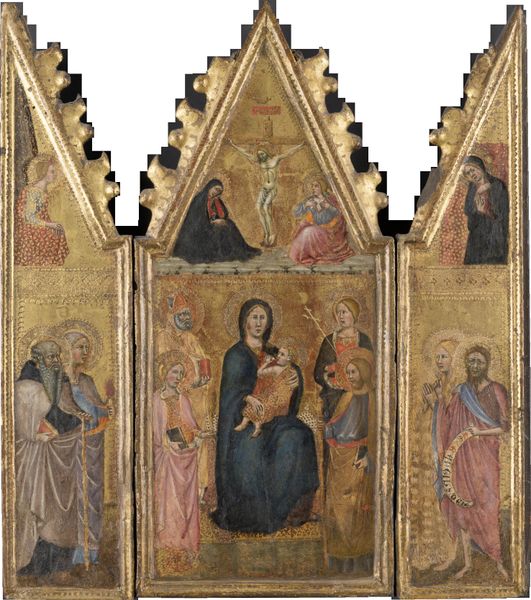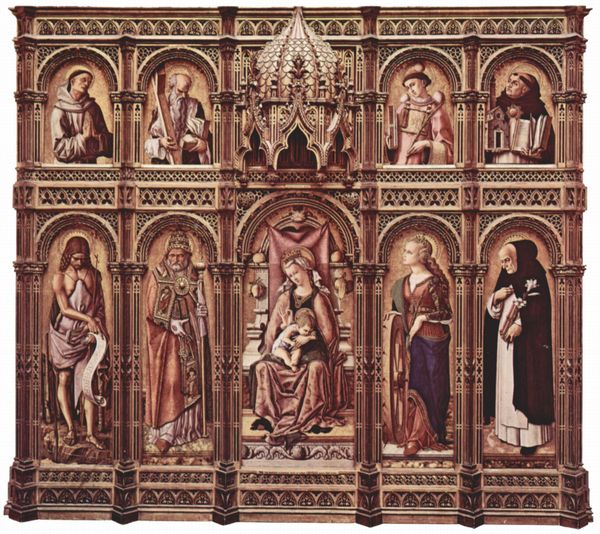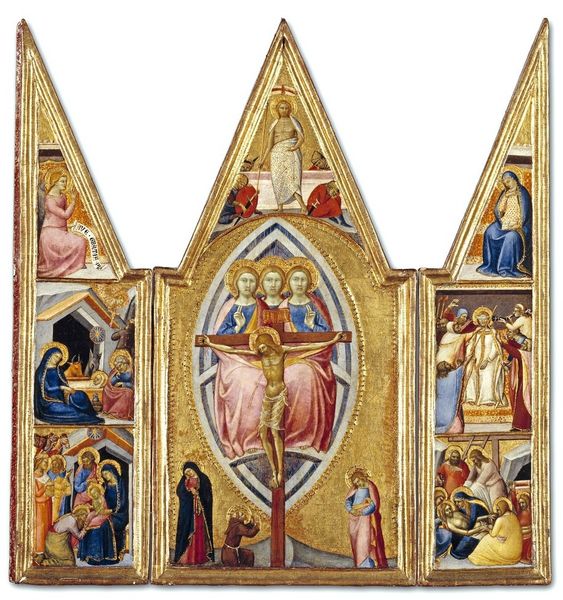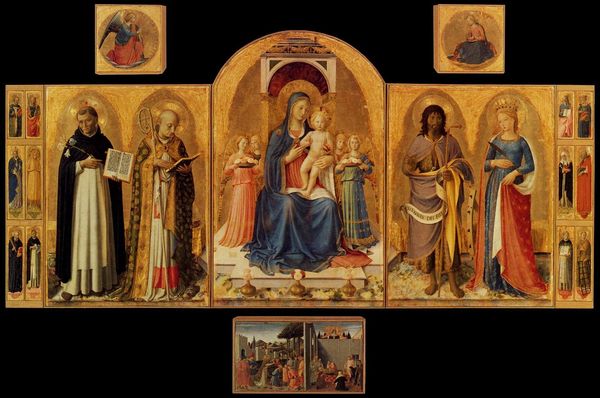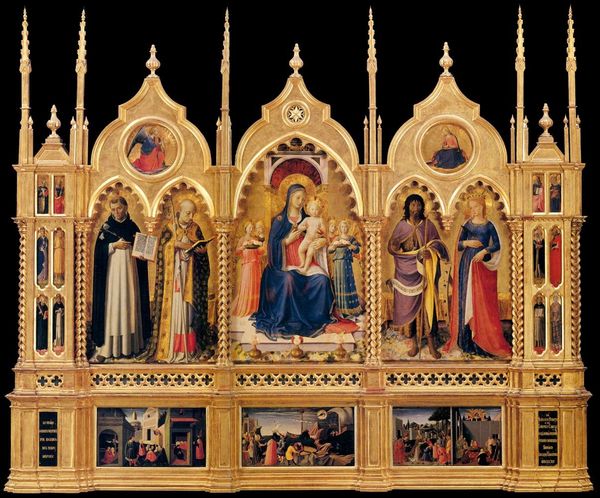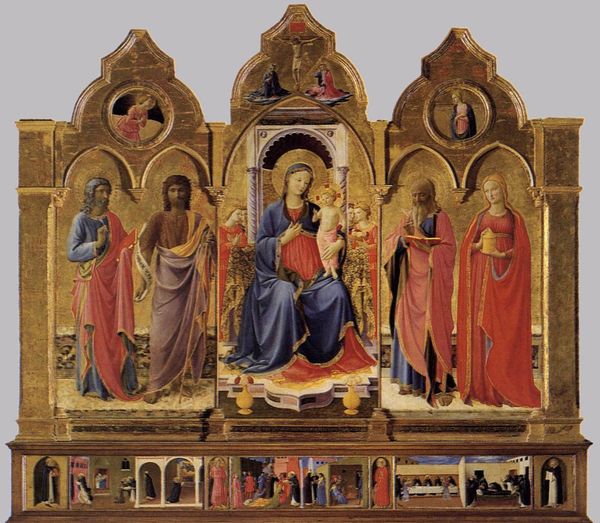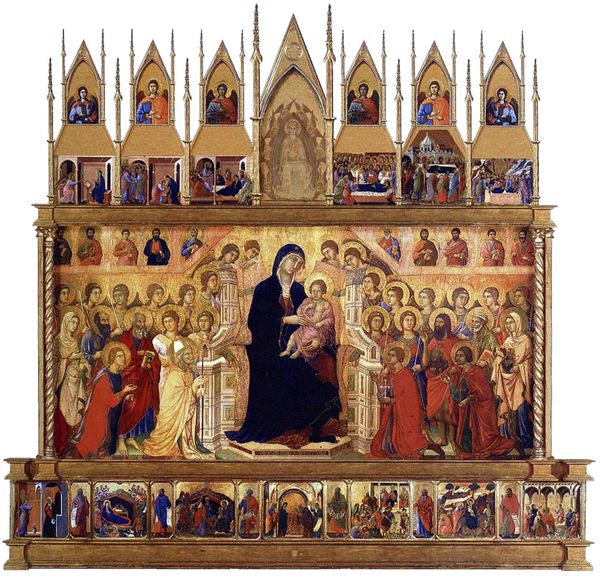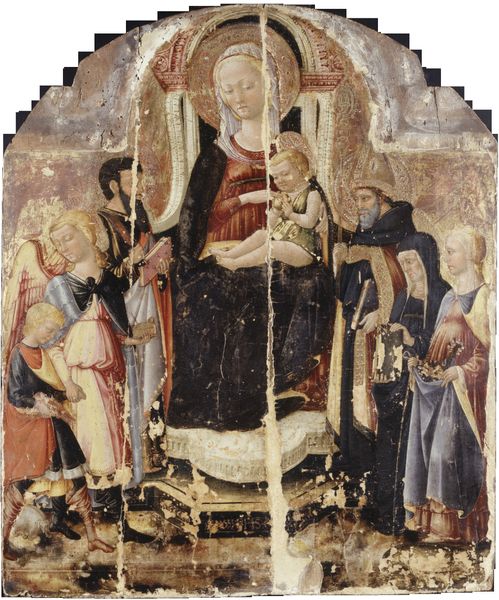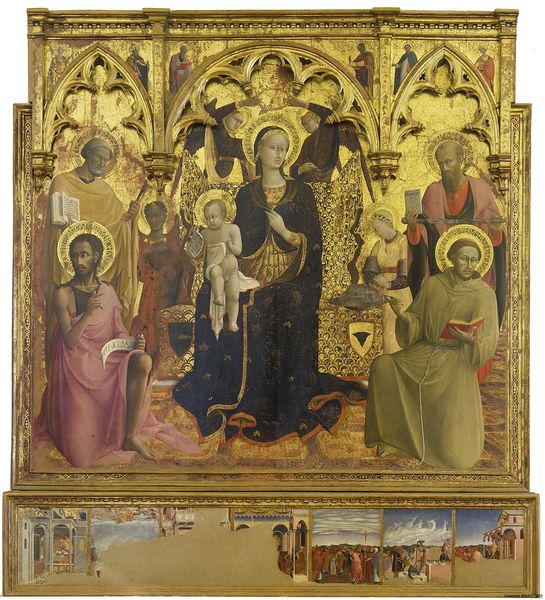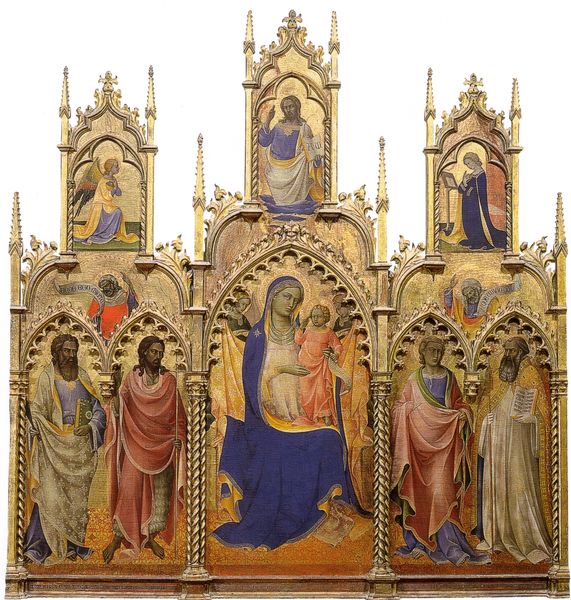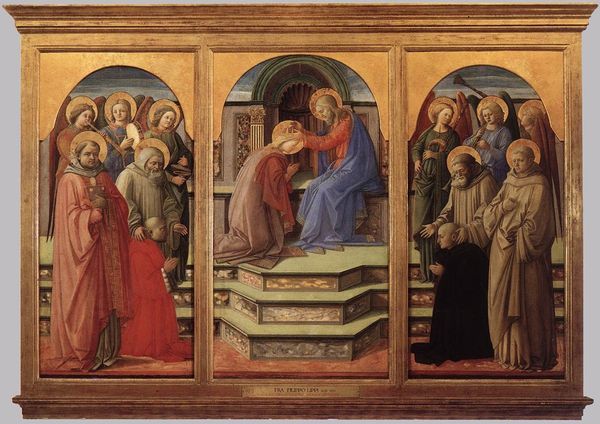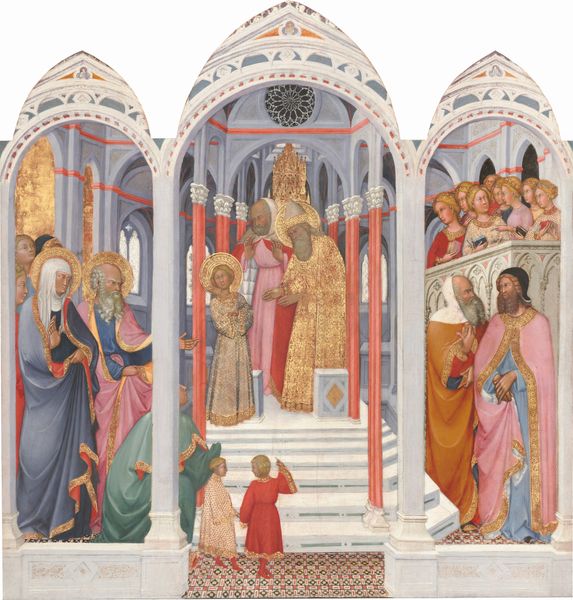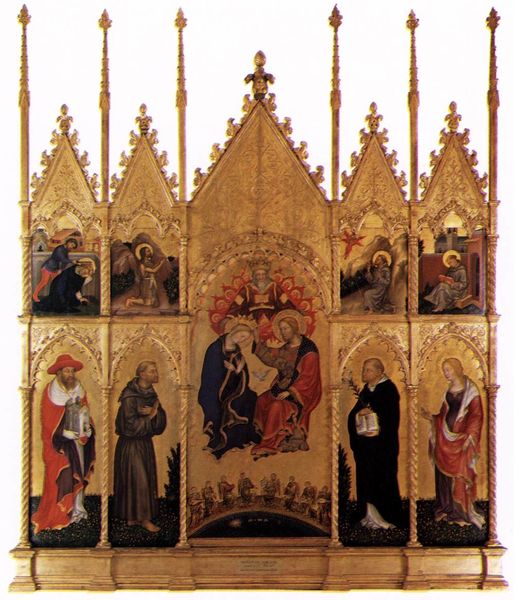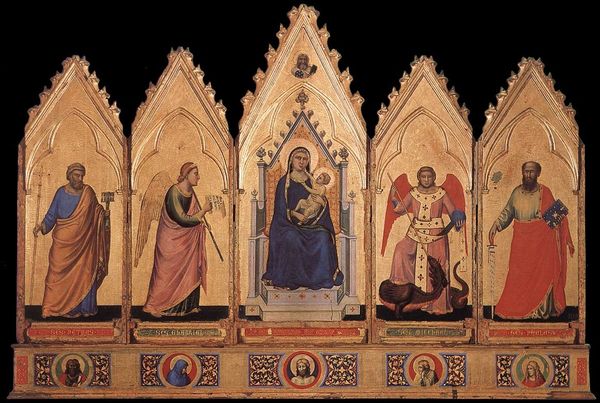
panel, painting, oil-paint
#
portrait
#
panel
#
narrative-art
#
painting
#
oil-paint
#
sculpture
#
holy-places
#
perspective
#
figuration
#
oil painting
#
child
#
christianity
#
history-painting
#
academic-art
#
italian-renaissance
#
early-renaissance
#
christ
Copyright: Public domain
Editor: Here we have Carlo Crivelli’s "Enthroned Madonna," painted in 1468, in oil on panel. The whole piece feels…grand, almost like a jewel-encrusted box. What do you see in this piece? Curator: I see a complex interplay of religious symbolism and social display characteristic of the Early Renaissance. Consider the altarpiece format: these weren’t just devotional objects; they were often commissioned by wealthy patrons to showcase their piety and status within the church. Notice how the Madonna is presented: regally enthroned, a queenly figure removed from everyday life, and surrounded by saints. How might the intended audience, the local parishioners, have received this image? Editor: Probably with a sense of awe and respect? The gold leaf and detailed ornamentation make it feel incredibly precious, almost unattainable. Curator: Exactly. This deliberate elevation served a social function, reinforcing hierarchies and demonstrating the patron's power and influence through their contribution to the church’s visual splendor. Do you see how Crivelli uses perspective, however imperfectly, to create a sense of depth, pulling the viewer into this sacred space? Editor: I do, now that you mention it. I initially focused on the flatness of the figures. So, you're saying this painting wasn't just about religious devotion; it was also a carefully constructed performance of social standing? Curator: Precisely. The arts in the Renaissance often walked a fine line between religious expression and social negotiation. Analyzing these commissions reveals a great deal about the complex relationship between the church, wealthy families, and the broader social fabric of the time. Editor: That gives me a lot to think about. I never really considered the social context as actively shaping the artwork itself. Curator: Art always reflects and participates in its own historical moment. Considering the public role of art is vital to understanding the piece in its complexity.
Comments
No comments
Be the first to comment and join the conversation on the ultimate creative platform.
